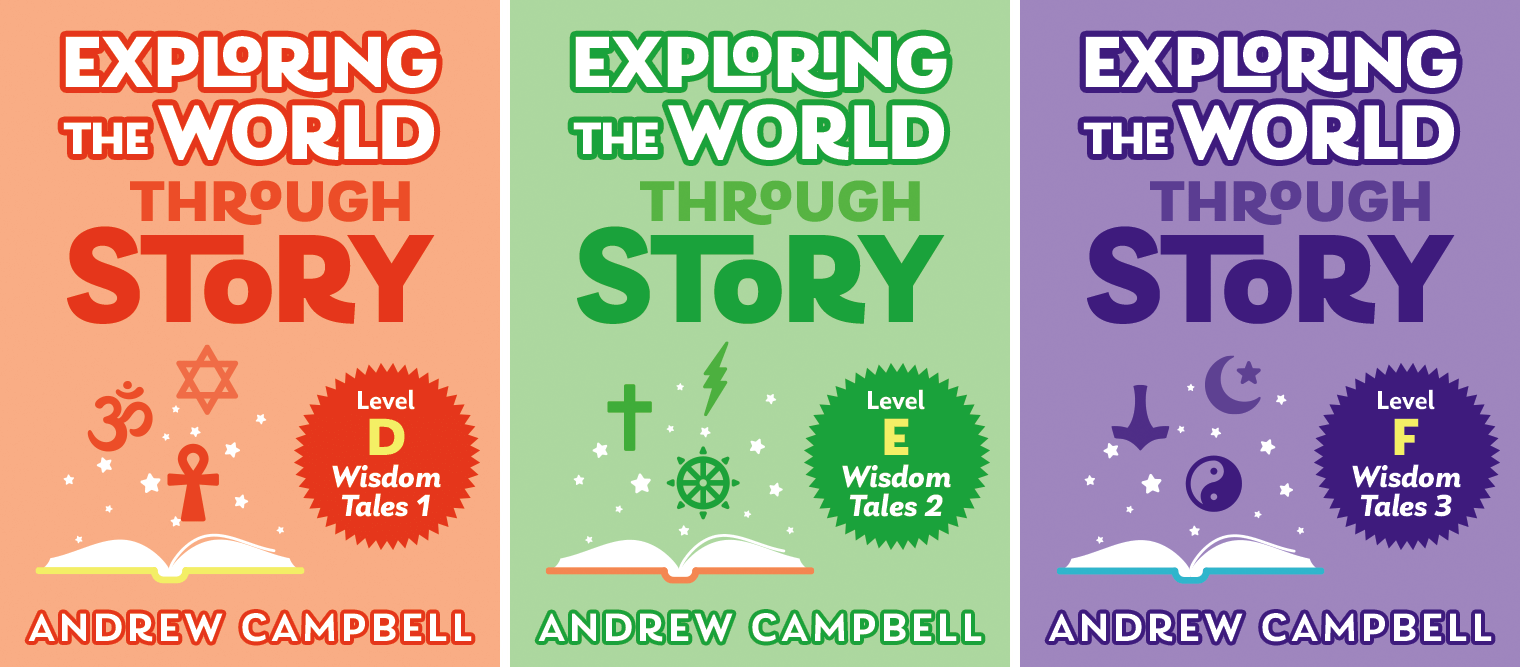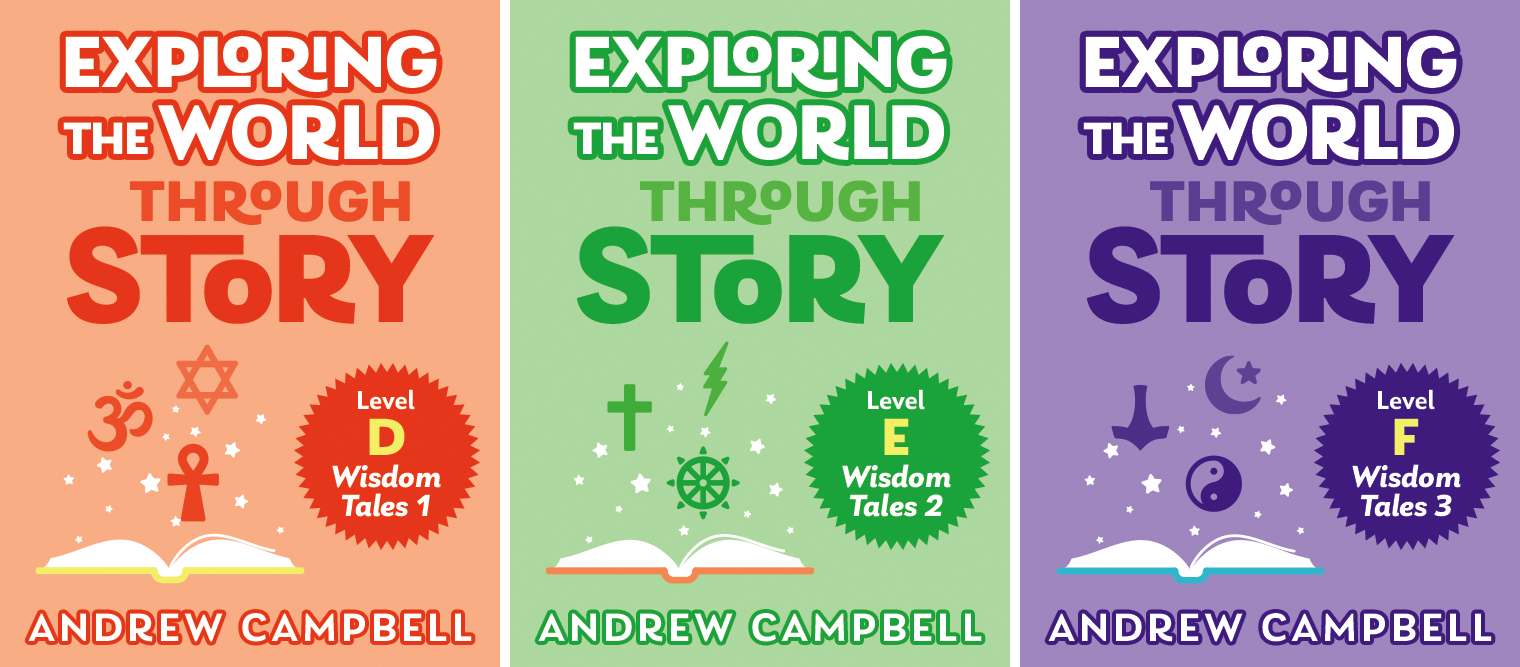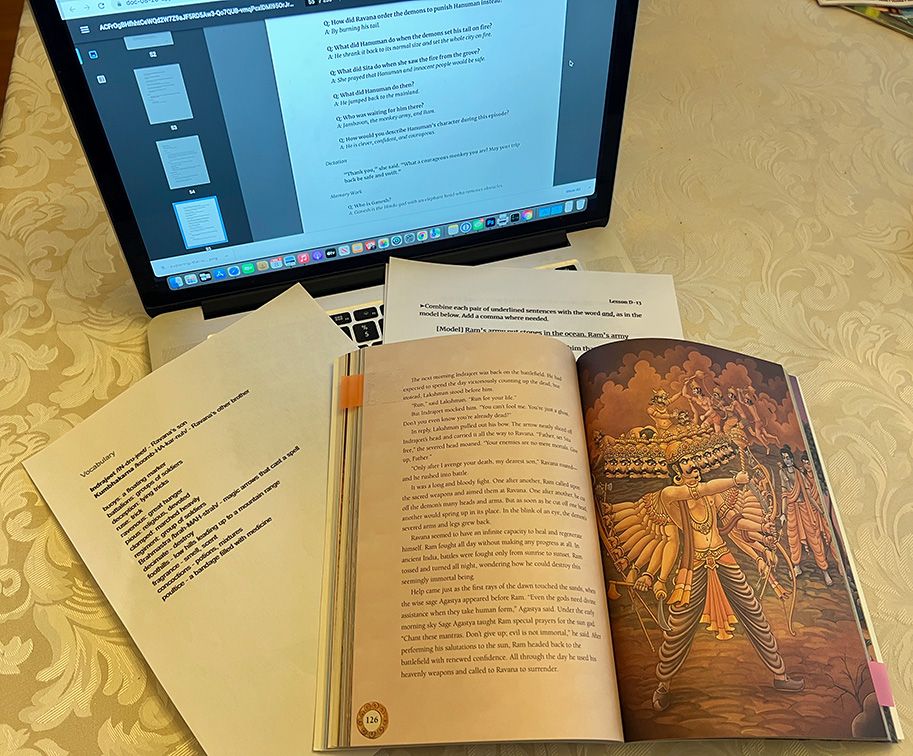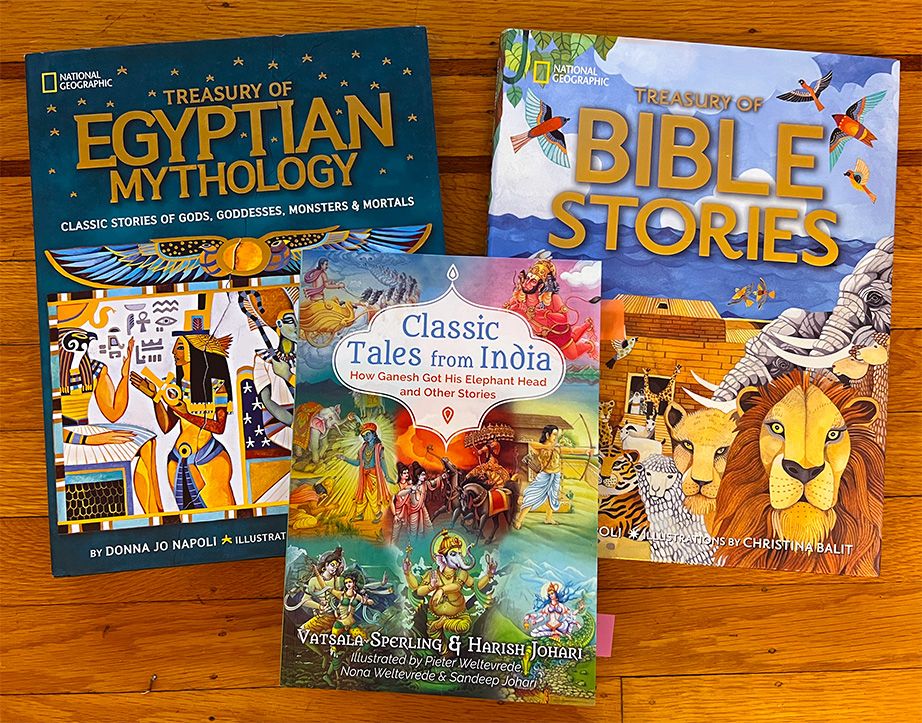Exploring the World through Story
First impressions of Exploring the World through Story, a literature-based curriculum.

We've recently started using a new curriculum, and it's been a big hit. It's called Exploring the World through Story, from Quidnam Press. It's a literature-based curriculum, based on traditional tales from around the world.
I've not been a fan of literature-based curricula. The idea with literature-based curricula is that a bunch of your learning is done in the context of reading good stories. This sounds appealing! But in practice, I've found that the story-reading experience suffers from having learning shoehorned in, and the learning suffers from being kinda arbitrary and scattershot. Plus, these curricula often have book lists as long as your arm, meaning you shell out a couple hundred bucks for books, or you do an awkward dance trying to reserve the books you need at the library. The few times I've tried literature-based lessons with Wanda, we've swiftly ditched them after finding them clunky and ineffective. We've found that more traditionally structured curricula provide faster, higher quality learning, and we get better, deeper reading by simply reading and discussing stories on our own.*
But this literature-based curriculum! This one has more focus, and is much, much better. For starters, the book list is short: just three books, each a collection of short stories. They are books I'm happy to add to our permanent collection. Here's what really makes a difference, though: this curriculum was created by one of my favorite pedagogy nerds, Andrew Campbell. They've come up on my blog before: they're one third of the team behind my favorite homeschooling podcast, Modern Classical Education @ Home. Campbell has done their homework, and Exploring the World through Story is designed with a focus on the research of how people learn and retain information. Thank you, brain science!
But, why add this to our learning?
For me to be sold on this, I needed to have a clear picture of what hole it would fill in our learning. We already have so much covered through the Michael Clay Thompson Language Arts curriculum, so I didn't want too much overlap, and there isn't.
Here's what we get from Exploring the World through Story:
- Foundational cultural stories
Campbell has thoughtfully chosen the stories for this program. The stories included here are an important base of much of the world's culture. These are stories that get referenced often. Echoes of these tales pop up everywhere. Knowing these stories well will help increase understanding in future reading, and will build appreciation for other cultures of the world.
Personally, I'm going to benefit a ton from finally reading the stories from the Old Testament. My crossword puzzle skills are about to get turbocharged! But seriously, these stories are in the everyone-should-know-this-stuff category, and I'm looking forward to filling my own significant knowledge gaps. - Reading comprehension
I've never been particularly concerned about Wanda's reading comprehension. She started reading pretty early, and whenever I've done informal comprehension checks she's seemed to do fine. But I also don't want to take that for granted, especially now that she's a bit older and we're getting into more complex reading. The activities in this program include some thorough but still gentle comprehension checking. - Summarizing
This is probably the number one reason I was keen to try this curriculum. Wanda has incredible thoughts banging around in that wonderful head, but getting them out is sometimes a struggle. Giving her structured, explicit practice with low-stakes summarizing and explaining will help bolster her gathering-and-organizing-thoughts skills. - Writing
The writing practice here is light but consistent, which is a good fit for us. We already have writing happening in other areas of our learning day, so we don't need anything too intense. Even better: Andrew Campbell is using The Writing Revolution practices! It's TWR activities I don't have to make myself. SOLD.
Together, these are skills Wanda will need to develop for optimal success in the years ahead, as we delve into more in-depth learning and analysis of academic texts.
Neat! But what is it?
Exploring the World through Story currently has six levels spanning the elementary school years, with three more in development to cover middle school years. We're jumping in at the fourth level, Level D, which is the first of three levels covering Wisdom Tales. Each level of Wisdom Tales uses stories pulled from one ancient civilization, one Asian tradition, and one of the three major Abrahamic faiths:

Level D (grade 3): tales from Hindu, ancient Egyptian, and Jewish traditions
Level E (grade 4): tales from Buddhist, Christian, and ancient Greek traditions
Level F (grade 5): tales from Islamic, Norse, and Chinese traditions
Each level contains 72 lessons, enough to cover 36 weeks if you're doing two lessons a week (a typical school year). We've been doing a lesson every day, though, and it hasn't been too much. (We'll likely slow down at some point; we aren't in a rush).

It's largely open-and-go, with minimal and somewhat optional prep, taking me maybe five minutes:
- I read the instructor's guide for the next lesson, and use Post-It tabs to mark where to start and end the lesson's reading in our story book.
- Each lesson has a list of characters (with helpful pronunciation guidance), plus a list of vocabulary words. I print them up for Wanda to refer to as we're reading. We're already doing a lot of vocabulary work through MCT, and so far the EWS words are ones that Wanda already knows. If we needed more vocabulary work, the list could be a good basis for a deeper vocab lesson.
- Each lesson has printable writing activity worksheets for the student. Sometimes I opt to have Wanda do the activity in a Google Doc instead. I print any worksheets, and/or set up a Google Doc for her.
- Each lesson has some little tidbit of information worth memorizing (for instance, in Level 5, the student memorizes a list of the major Chinese dynasties). I write the lesson's memory work on an index card. I'll write more about how we're managing this kind of memory work in a future post.
Quidnam Press has free PDF samples of each level you can download, to get a feel for what a lesson is like. The free samples also include each level's blissfully short list of required books, which you purchase separately from your favorite bookseller.

So, how's it going?
We're now 13 lessons into Level D, where we've been reading stories from Classic Tales from India, including the Ramayana. The stories are written and illustrated by native Indians (with an assist from a father-son pair of Dutch illustrators who trained closely with one of the native Indian illustrators of the book).

Wanda has loved the stories, and especially loves the beautiful illustrations. She takes no convincing when it's time to start an Exploring the World through Story lesson; she's all in. It has become her favorite lesson of the day.
I love these lessons because they feel like they're hitting a sweet spot of fun and engagement for her, while still stretching her to an edge of skill development with her story discussion skills. That band between "fun, but too easy" and "challenging, but too painful" can be incredibly narrow and hard to find for kids with low frustration tolerance. Add in the asynchronous development that is the hallmark of 2e kids, and it gets even trickier. So when something just fits... hooray!
Only time will tell if we get what we want out of this curriculum, but so far I see plenty of reasons to be hopeful. I'm glad I took the leap to add Exploring the World through Story to our learning.
* This has been my assessment of many literature-based curricula, based on what works for us. I encourage you to look for yourself and try them for your own family. Don't rule them out as a style based solely on my opinions, which are about me and my kid. We all do this differently, because everyone is different.

